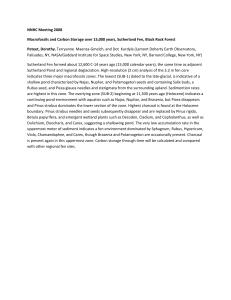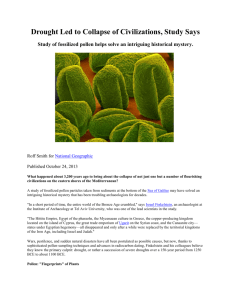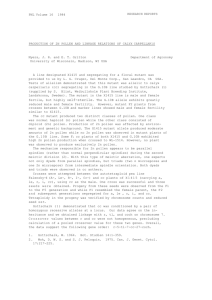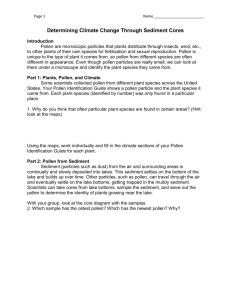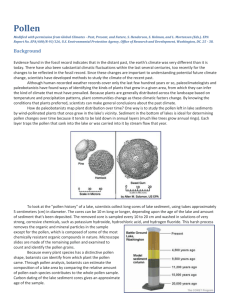NNHC Meeting 2008 Comparing Pollen Records from a Pond and
advertisement
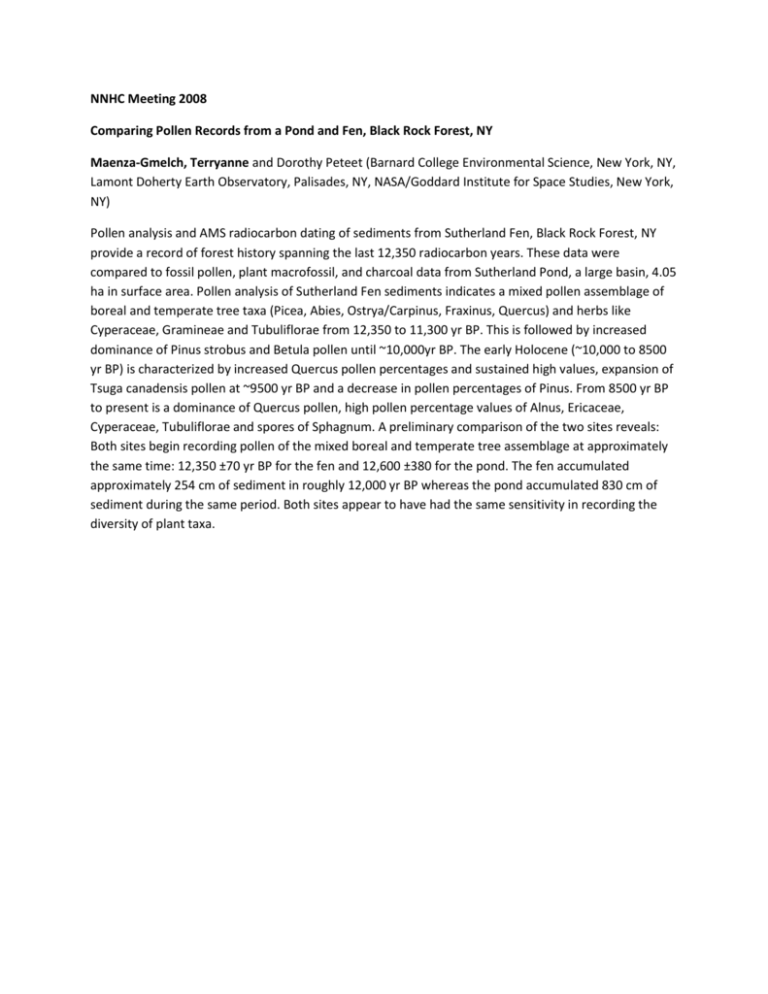
NNHC Meeting 2008 Comparing Pollen Records from a Pond and Fen, Black Rock Forest, NY Maenza-Gmelch, Terryanne and Dorothy Peteet (Barnard College Environmental Science, New York, NY, Lamont Doherty Earth Observatory, Palisades, NY, NASA/Goddard Institute for Space Studies, New York, NY) Pollen analysis and AMS radiocarbon dating of sediments from Sutherland Fen, Black Rock Forest, NY provide a record of forest history spanning the last 12,350 radiocarbon years. These data were compared to fossil pollen, plant macrofossil, and charcoal data from Sutherland Pond, a large basin, 4.05 ha in surface area. Pollen analysis of Sutherland Fen sediments indicates a mixed pollen assemblage of boreal and temperate tree taxa (Picea, Abies, Ostrya/Carpinus, Fraxinus, Quercus) and herbs like Cyperaceae, Gramineae and Tubuliflorae from 12,350 to 11,300 yr BP. This is followed by increased dominance of Pinus strobus and Betula pollen until ~10,000yr BP. The early Holocene (~10,000 to 8500 yr BP) is characterized by increased Quercus pollen percentages and sustained high values, expansion of Tsuga canadensis pollen at ~9500 yr BP and a decrease in pollen percentages of Pinus. From 8500 yr BP to present is a dominance of Quercus pollen, high pollen percentage values of Alnus, Ericaceae, Cyperaceae, Tubuliflorae and spores of Sphagnum. A preliminary comparison of the two sites reveals: Both sites begin recording pollen of the mixed boreal and temperate tree assemblage at approximately the same time: 12,350 ±70 yr BP for the fen and 12,600 ±380 for the pond. The fen accumulated approximately 254 cm of sediment in roughly 12,000 yr BP whereas the pond accumulated 830 cm of sediment during the same period. Both sites appear to have had the same sensitivity in recording the diversity of plant taxa.

